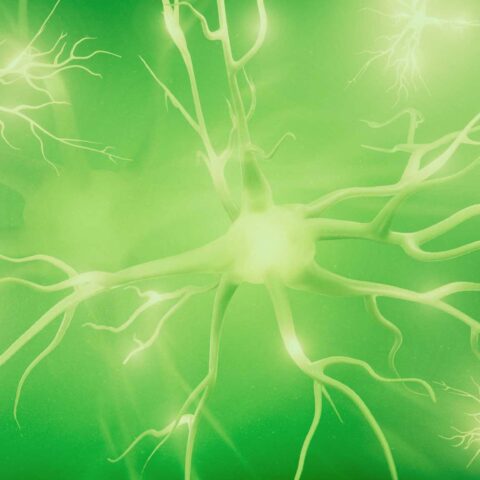Last Updated: October 9, 2024, 5 pm UTC
Between 7 and 10 percent of the U.S. population suffers from some type of neuropathic pain, and a significant share of those affected require chronic pain treatment.1 This high rate of occurrence makes our limited understanding of these afflictions, and the long search for effective treatments, all the more frustrating.
Treating neuropathic pain starts with an understanding of what the condition is, how it’s diagnosed, and what treatments are currently in use — and that’s how we kicked off our recent webcast, Neuropathic Pain Studies: Patient Selection, Study Design, and Clinical Trial Challenges, with Michael Kuss, Premier’s Vice President, Clinical Development Services, Analgesia; Scott Millard, Premier’s Executive Director, Strategic Development, Analgesia; and Dr. Michael H. Skinner, MD, PharmD, Premier’s Executive Director, Medical Affairs and Strategic Consulting. Here’s a look at what we covered.
As opposed to nociceptive or acute pain, neuropathic pain is a direct consequence of a lesion or disease affecting the somatosensory system. Typical symptoms are burning, numbness, pins and needles, and sometimes jabbing sensations that resemble electric shock. Among the most common indications are painful diabetic neuropathy, caused mostly by damage to distal peripheral nerves; and idiopathic fibromyalgia, which presents similarly to PDN but has no identifiable cause.
Neuropathic disorders vary in their presentation. Diabetes-associated neuropathic pain has a classic stocking-glove distribution, reflecting the fact that the smallest and most distal nerve fibers are those most affected by the disorder. Postherpetic neuralgia, on the other hand, has a focal distribution usually along cervical or thoracic dermatomes and tends to occur at the site of a recent shingles rash, while fibromyalgia — along with most other types of neuropathic pain — is characterized by widespread symptoms.
While researchers have made important inroads in understanding the neurologic abnormalities associated with neuropathic pain, the exact mechanism of the disorders is still not well established. In central disorders like multiple sclerosis, there are technical lesions of the central nervous system that can lead to abnormal signaling. For disorders predominantly affecting the peripheral nervous system, there appear to be numerous peripheral and central abnormalities. They include clearly direct effects such as ion channel alterations and alterations in central modulatory processes that can affect how the central nervous system processes and interprets pain signals.
Diagnosing neuropathic pain
Initial neuropathic pain diagnosis is based on patient medical history and a description of pain symptoms. While there is no objective diagnostic test, a number of validated screening tools can be helpful diagnostic tools, among them the Leeds Assessment of Neuropathic Pain Symptoms and Signs, the Douleur Neuropathique 4 questions, the Neuropathic Pain Questionnaire, and the Neuropathic Pain Symptom Inventory.
Accepted treatments for neuropathic pain are generally divided into first-, second-, and third-line treatments based on the extent of experimental evidence supporting their effectiveness. Antidepressants such as older tricyclic drugs and anti-epileptic drugs like pregabalin have shown the greatest promise, effective in about 30 to 50 percent of patients.2 Tricyclic antidepressants can be limited, however, by anticholinergic effects such as dry mouth and even adverse cardiac effects.
Drugs like duloxetine are better tolerated but appear to be effective in a quarter of patients at best. Since they are fairly well-tolerated, gabapentin and pregabalin are often good first choices for many types of neuropathic pain. Second-line drugs like capsaicin and lidocaine must be applied topically, so their use is limited mostly to focal conditions such as post-herpetic neuralgia. Use of opioids to treat these conditions is controversial, especially in light of growing concern over abuse and dependence and the fact that they have shown limited efficacy.
Other treatment approaches remain in the early stages of investigation. Some of the novel mechanisms include selective sodium channel-blocking agents, acting as Nav1.7 channel and nerve growth factor inhibitors. And no discussion of neuropathic pain management is complete without mention of quality-of-life issues. These patients often suffer from comorbid disorders such as depression, disturbed sleep, and impaired cognitive function. A number of assessment tools, such as the Short-Form Health Survey, can help identify these disorders.
Check out our neuropathic pain webcast for more on how researchers are addressing this significant unmet need.
[1] Colloca L, Ludman T, Bouhassira D, et al. Neuropathic pain. Nat Rev Dis Primers. 2017;3:17002. Published 2017 Feb 16. doi:10.1038/nrdp.2017.2
[2] Semel D, Murphy TK, Zlateva G, Cheung R, Emir B. Evaluation of the safety and efficacy of pregabalin in older patients with neuropathic pain: results from a pooled analysis of 11 clinical studies. BMC Family Practice. 2010;11(85). doi:10.1186/1471-2296-11-85.

 Webinar
Webinar 


 Perspectives Blog
Perspectives Blog 